Abstract
On the basis of their antigenic properties, influenza virus strains are classified into types and subtypes, which are further subdivided into variants that differ to various degrees in haemagglutination-inhibition assays. Evidence is presented that during infection with an influenza A(H3N2) virus the respiratory tract of a human patient often harbours more than one antigenic virus variant. These variants are frequently propagated by embryonated fowl eggs and monkey cells with different efficiencies, and this may lead to the selection of different variants by either of these host systems. Also, passage of virus by a given host is sometimes attended by changes in reactivity in haemagglutination-inhibition tests. In some cases the heterogeneity described also affects the specific immunogenicity of the virus in ferrets. Virus strains cloned in monkey kidney cell cultures gave variants that were stable upon further passage. These results may have implications for antigenic and biochemical investigations of epidemiologically relevant virus variants. It is argued that the antigenic drift of influenza A(H3N2) viruses is best characterized by analyses, both with post-infection ferret antisera and with panels of monoclonal antibodies, of virus strains isolated and passaged in monkey kidney cell cultures only.
Full text
PDF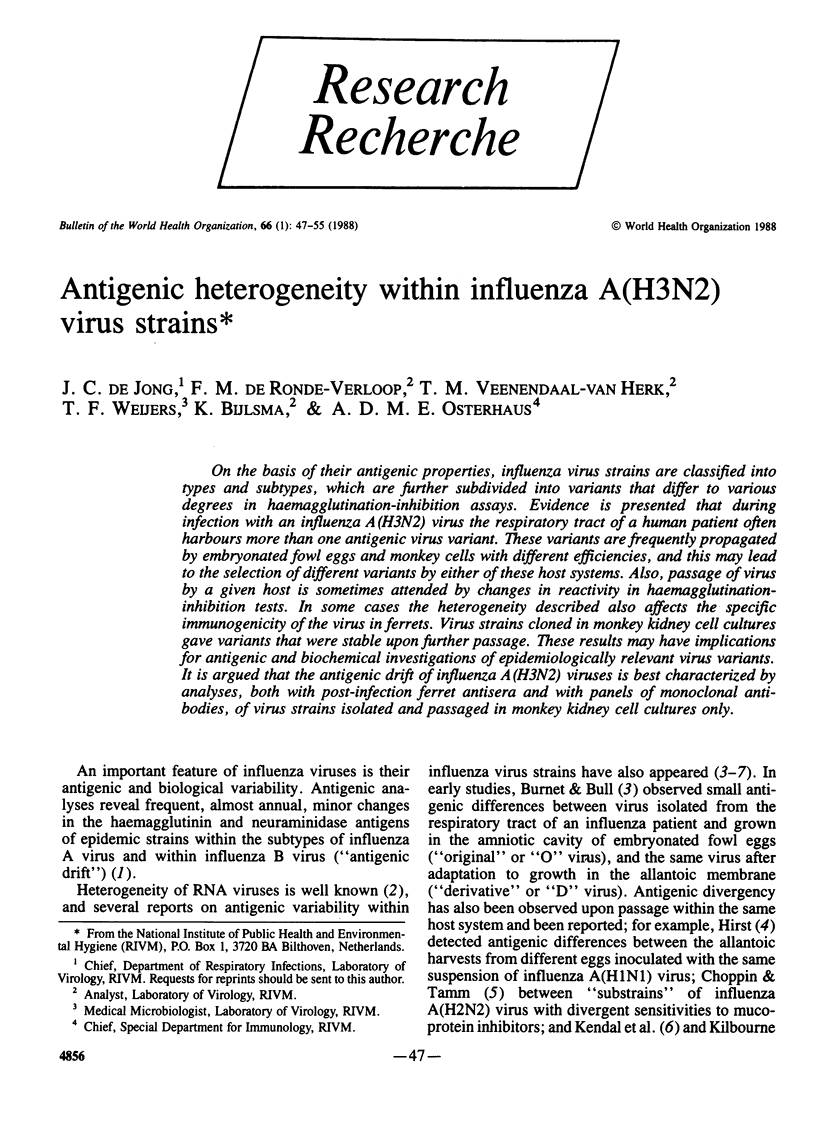
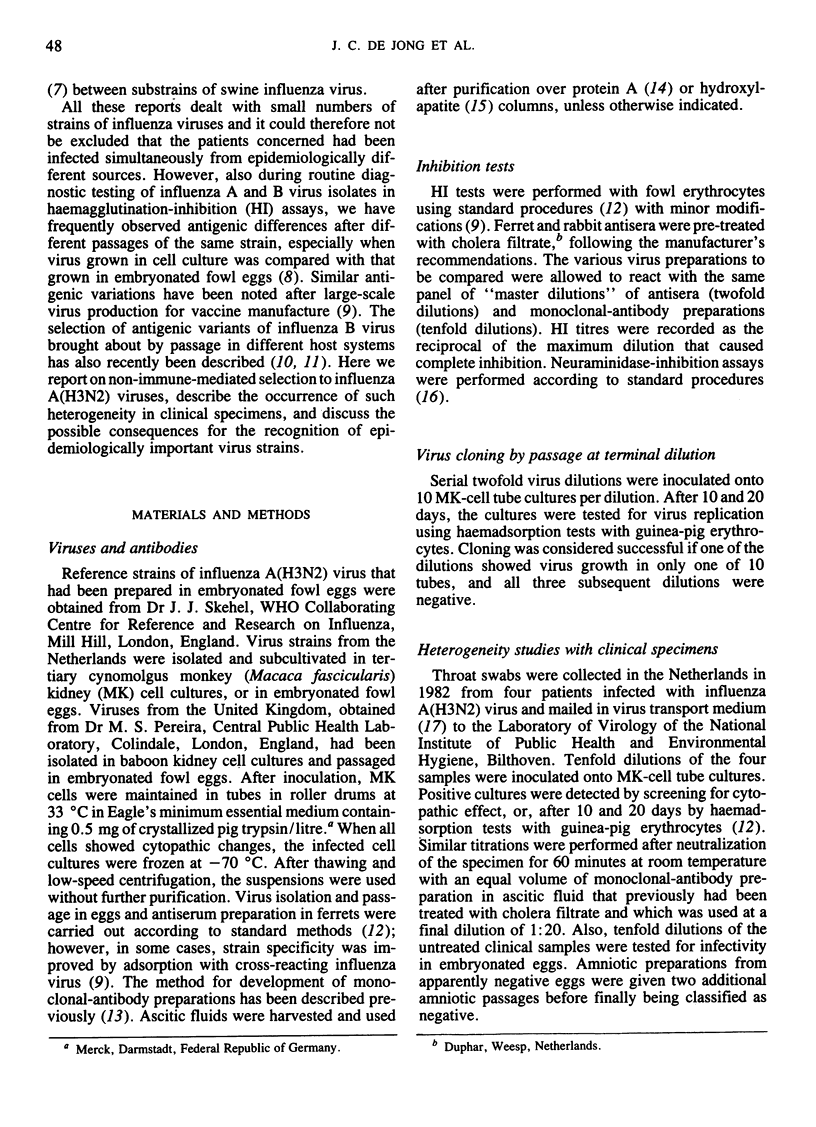
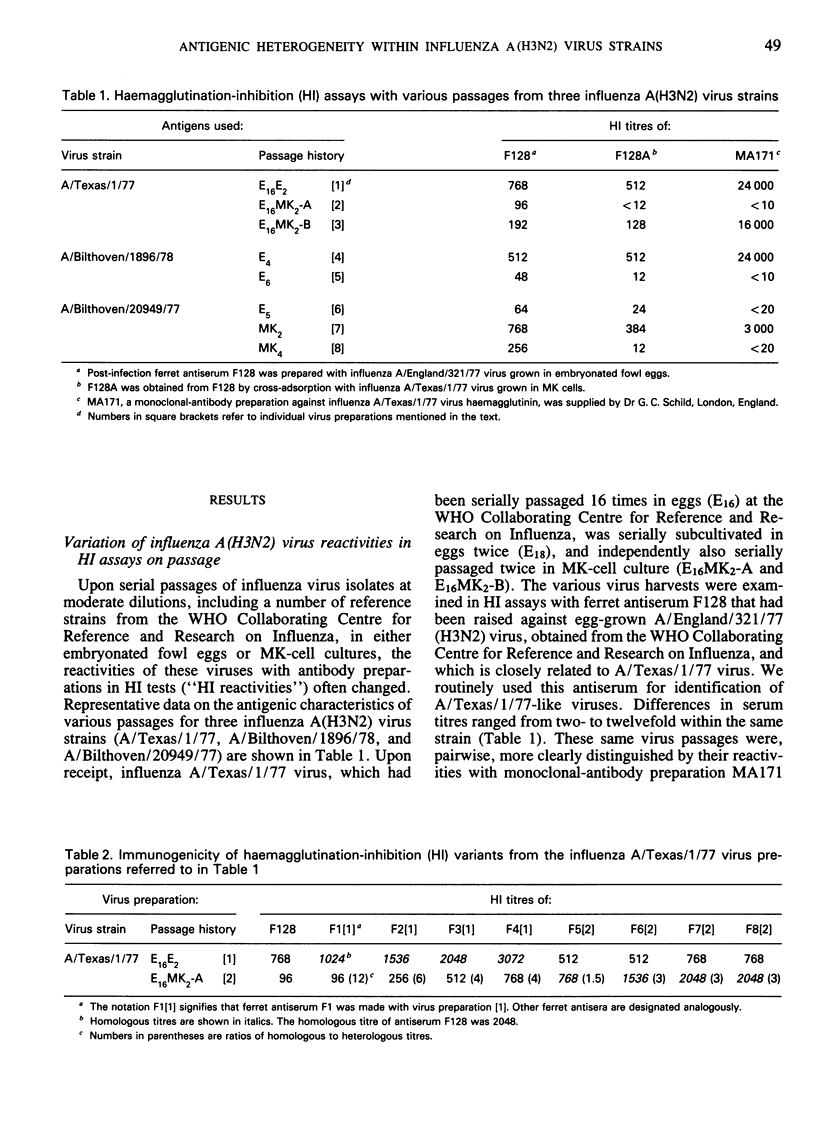
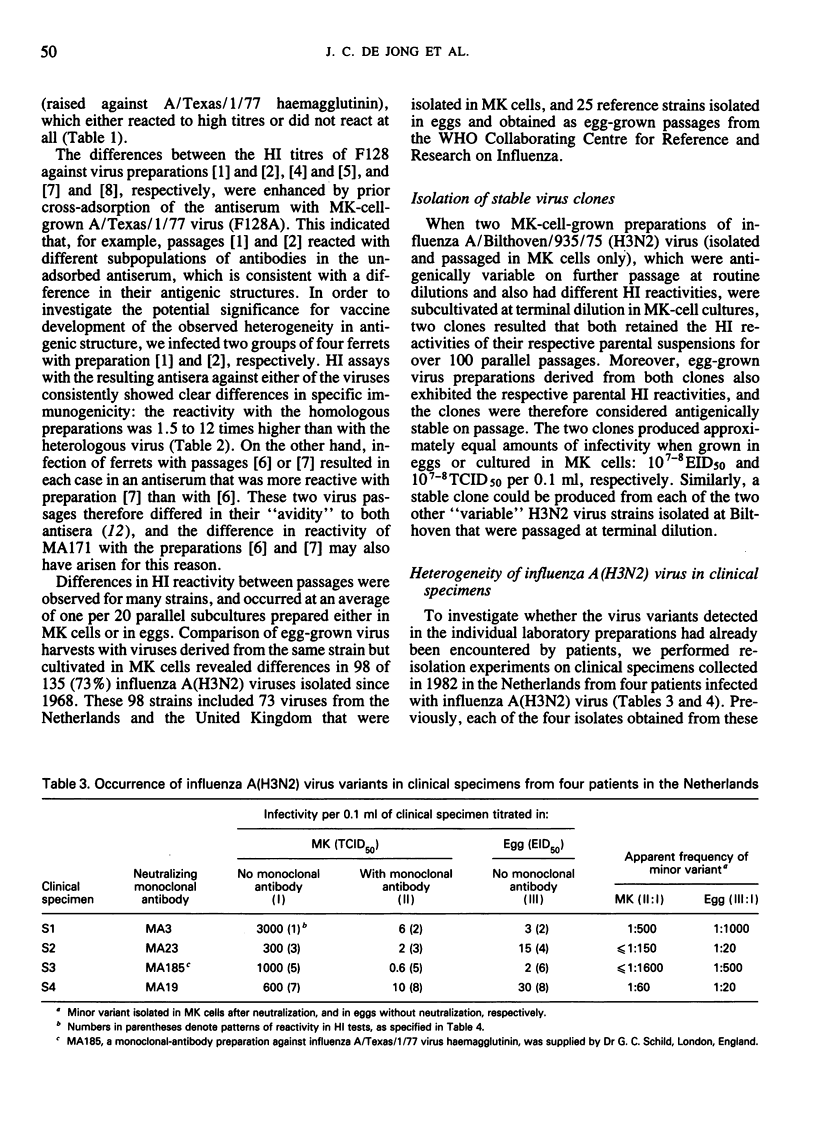
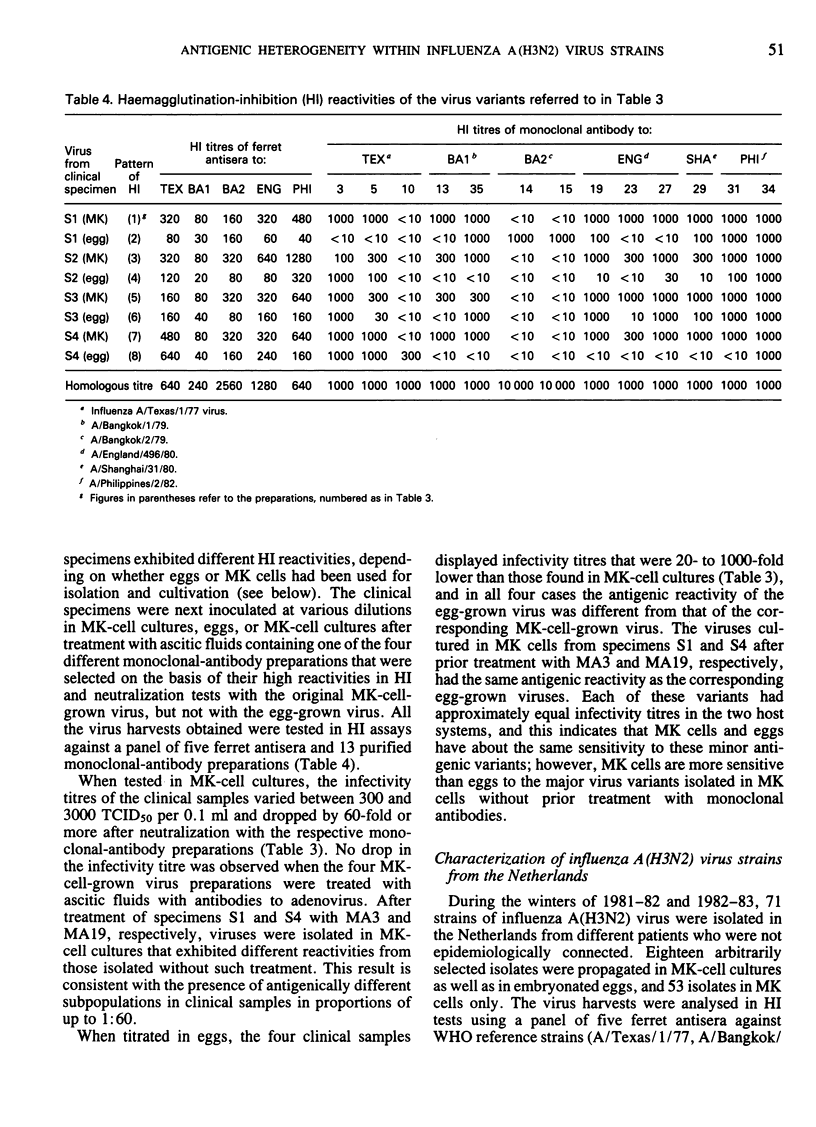
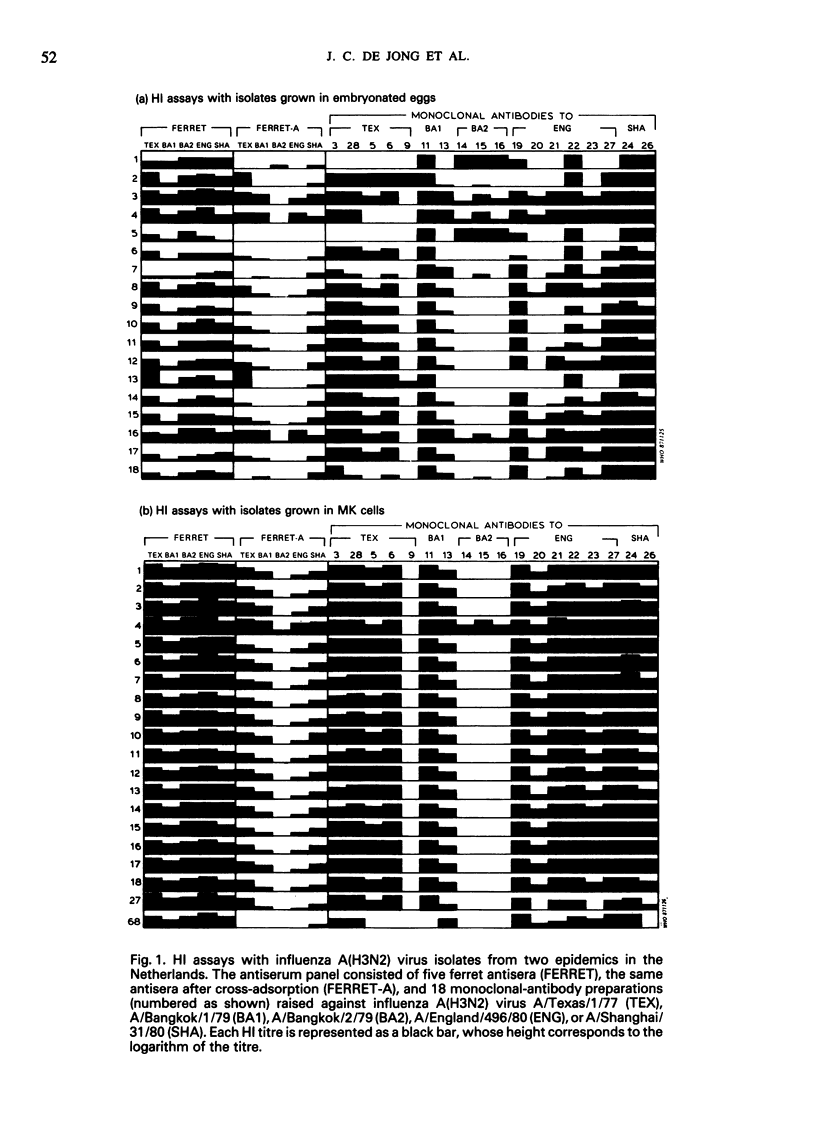
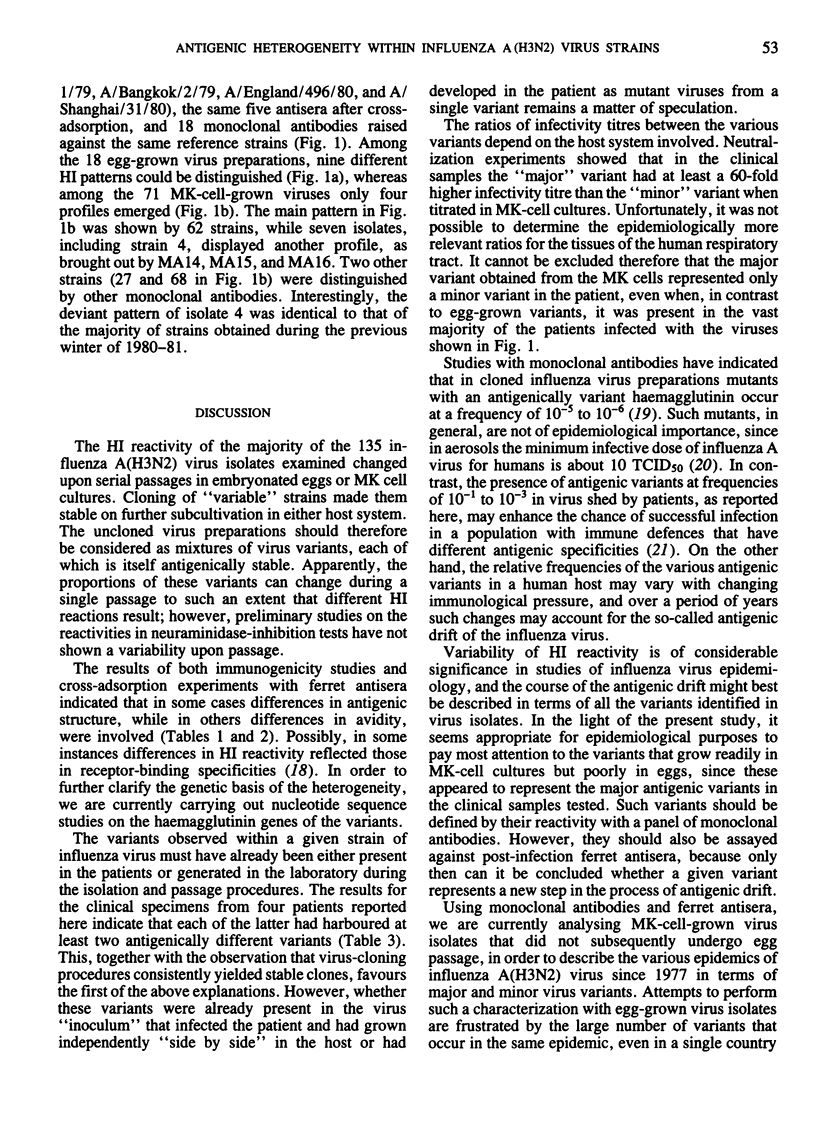
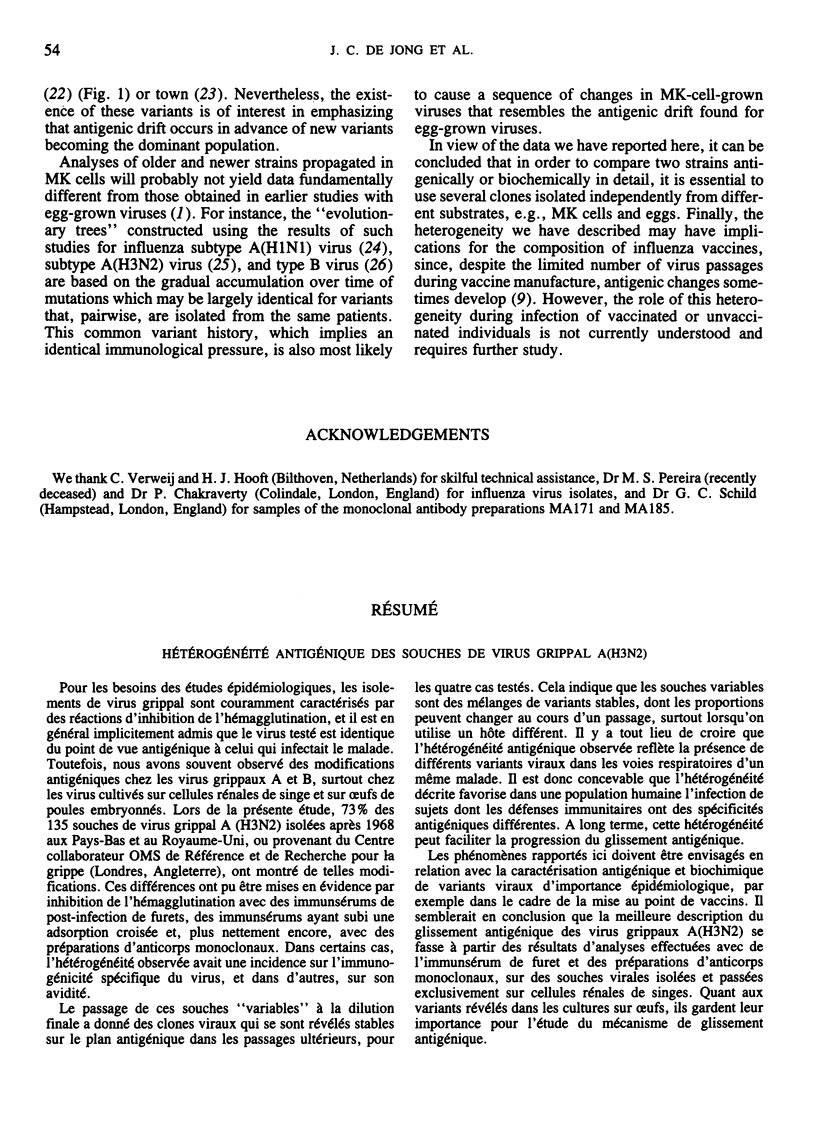
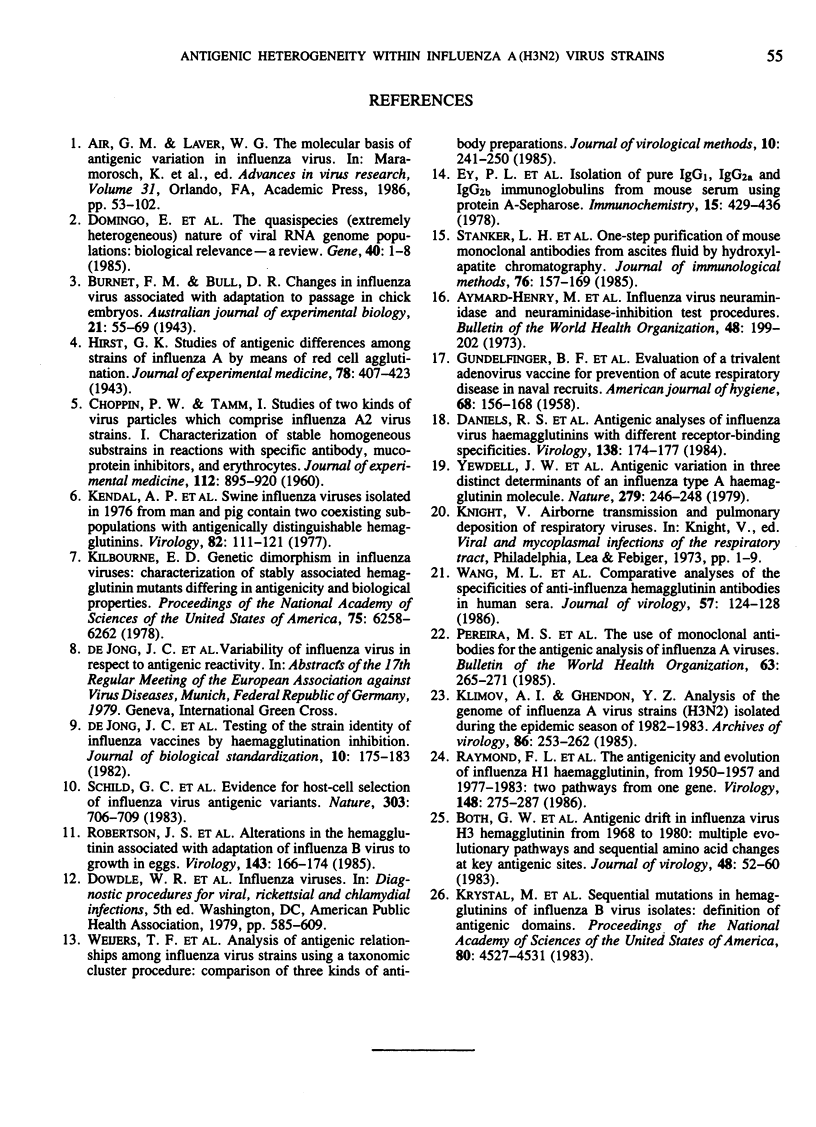
Selected References
These references are in PubMed. This may not be the complete list of references from this article.
- Air G. M., Laver W. G. The molecular basis of antigenic variation in influenza virus. Adv Virus Res. 1986;31:53–102. doi: 10.1016/s0065-3527(08)60262-6. [DOI] [PubMed] [Google Scholar]
- Aymard-Henry M., Coleman M. T., Dowdle W. R., Laver W. G., Schild G. C., Webster R. G. Influenzavirus neuraminidase and neuraminidase-inhibition test procedures. Bull World Health Organ. 1973;48(2):199–202. [PMC free article] [PubMed] [Google Scholar]
- Choppin P. W., Tamm I. STUDIES OF TWO KINDS OF VIRUS PARTICLES WHICH COMPRISE INFLUENZA A2 VIRUS STRAINS : I. CHARACTERIZATION OF STABLE HOMOGENEOUS SUBSTRAINS IN REACTIONS WITH SPECIFIC ANTIBODY, MUCOPROTEIN INHIBITORS, AND ERYTHROCYTES. J Exp Med. 1960 Oct 31;112(5):895–920. doi: 10.1084/jem.112.5.895. [DOI] [PMC free article] [PubMed] [Google Scholar]
- Daniels R. S., Douglas A. R., Skehel J. J., Wiley D. C., Naeve C. W., Webster R. G., Rogers G. N., Paulson J. C. Antigenic analyses of influenza virus haemagglutinins with different receptor-binding specificities. Virology. 1984 Oct 15;138(1):174–177. doi: 10.1016/0042-6822(84)90158-2. [DOI] [PubMed] [Google Scholar]
- Ey P. L., Prowse S. J., Jenkin C. R. Isolation of pure IgG1, IgG2a and IgG2b immunoglobulins from mouse serum using protein A-sepharose. Immunochemistry. 1978 Jul;15(7):429–436. doi: 10.1016/0161-5890(78)90070-6. [DOI] [PubMed] [Google Scholar]
- GUNDELFINGER B. F., HANTOVER M. J., BELL J. A., LOOSLI C. G., ROWE W. P. Evaluation of a trivalent adenovirus vaccine for prevention of acute respiratory disease in naval recruits. Am J Hyg. 1958 Sep;68(2):156–168. doi: 10.1093/oxfordjournals.aje.a119960. [DOI] [PubMed] [Google Scholar]
- Hirst G. K. STUDIES OF ANTIGENIC DIFFERENCES AMONG STRAINS OF INFLUENZA A BY MEANS OF RED CELL AGGLUTINATION. J Exp Med. 1943 Nov 1;78(5):407–423. doi: 10.1084/jem.78.5.407. [DOI] [PMC free article] [PubMed] [Google Scholar]
- Kendal A. P., Noble G. R., Dowdle W. R. Swine influenza viruses isolated in 1976 from man and pig contain two coexisting subpopulations with antigenically distinguishable hemagglutinins. Virology. 1977 Oct 1;82(1):111–121. doi: 10.1016/0042-6822(77)90037-x. [DOI] [PubMed] [Google Scholar]
- Kilbourne E. D. Genetic dimorphism in influenza viruses: characterization of stably associated hemagglutinin mutants differing in antigenicity and biological properties. Proc Natl Acad Sci U S A. 1978 Dec;75(12):6258–6262. doi: 10.1073/pnas.75.12.6258. [DOI] [PMC free article] [PubMed] [Google Scholar]
- Klimov A. I., Ghendon Y. Z. Analysis of the genome of influenza A virus strains (H3N2) isolated during the epidemic season of 1982-1983. Arch Virol. 1985;86(3-4):253–262. doi: 10.1007/BF01309829. [DOI] [PubMed] [Google Scholar]
- Krystal M., Young J. F., Palese P., Wilson I. A., Skehel J. J., Wiley D. C. Sequential mutations in hemagglutinins of influenza B virus isolates: definition of antigenic domains. Proc Natl Acad Sci U S A. 1983 Jul;80(14):4527–4531. doi: 10.1073/pnas.80.14.4527. [DOI] [PMC free article] [PubMed] [Google Scholar]
- Pereira M. S., Chakraverty P., Cunningham P., Webster R. G. The use of monoclonal antibodies for the antigenic analysis of influenza A viruses. Bull World Health Organ. 1985;63(2):265–271. [PMC free article] [PubMed] [Google Scholar]
- Raymond F. L., Caton A. J., Cox N. J., Kendal A. P., Brownlee G. G. The antigenicity and evolution of influenza H1 haemagglutinin, from 1950-1957 and 1977-1983: two pathways from one gene. Virology. 1986 Jan 30;148(2):275–287. doi: 10.1016/0042-6822(86)90325-9. [DOI] [PubMed] [Google Scholar]
- Robertson J. S., Naeve C. W., Webster R. G., Bootman J. S., Newman R., Schild G. C. Alterations in the hemagglutinin associated with adaptation of influenza B virus to growth in eggs. Virology. 1985 May;143(1):166–174. doi: 10.1016/0042-6822(85)90105-9. [DOI] [PubMed] [Google Scholar]
- Schild G. C., Oxford J. S., de Jong J. C., Webster R. G. Evidence for host-cell selection of influenza virus antigenic variants. Nature. 1983 Jun 23;303(5919):706–709. doi: 10.1038/303706a0. [DOI] [PubMed] [Google Scholar]
- Stanker L. H., Vanderlaan M., Juarez-Salinas H. One-step purification of mouse monoclonal antibodies from ascites fluid by hydroxylapatite chromatography. J Immunol Methods. 1985 Jan 21;76(1):157–169. doi: 10.1016/0022-1759(85)90488-0. [DOI] [PubMed] [Google Scholar]
- Wang M. L., Skehel J. J., Wiley D. C. Comparative analyses of the specificities of anti-influenza hemagglutinin antibodies in human sera. J Virol. 1986 Jan;57(1):124–128. doi: 10.1128/jvi.57.1.124-128.1986. [DOI] [PMC free article] [PubMed] [Google Scholar]
- Yewdell J. W., Webster R. G., Gerhard W. U. Antigenic variation in three distinct determinants of an influenza type A haemagglutinin molecule. Nature. 1979 May 17;279(5710):246–248. doi: 10.1038/279246a0. [DOI] [PubMed] [Google Scholar]
- de Jong J. C., de Ronde-Verloop F. M., Dorpema J. W. Testing of the strain identity of influenza vaccines by haemagglutination inhibition. J Biol Stand. 1982 Jul;10(3):175–183. doi: 10.1016/s0092-1157(82)80018-8. [DOI] [PubMed] [Google Scholar]


